- Justin Hougham
- Director, Upham Woods
- Response to COVID-19 Field Research and Education Disruptions: Creating Virtual Field Experiences in Coastal and Estuarine Science
- https://fyi.extension.wisc.edu/environmentaleducation/nsf-marine-field-science/
- Upham Woods Outdoor Learning Center UW-Madison, University of South Carolina Baruch Marine Field..., University of Georgia Marine Institute at Sapelo Island...
- Emily Baumann
- Lab Specialist
- Response to COVID-19 Field Research and Education Disruptions: Creating Virtual Field Experiences in Coastal and Estuarine Science
- https://fyi.extension.wisc.edu/environmentaleducation/nsf-marine-field-science/
- University of South Carolina
- Damon Gannon
- Assistant Director
- Response to COVID-19 Field Research and Education Disruptions: Creating Virtual Field Experiences in Coastal and Estuarine Science
- https://fyi.extension.wisc.edu/environmentaleducation/nsf-marine-field-science/
- University of Georgia
- Zoe Goodrow
- Research Specialist
- Response to COVID-19 Field Research and Education Disruptions: Creating Virtual Field Experiences in Coastal and Estuarine Science
- https://fyi.extension.wisc.edu/environmentaleducation/nsf-marine-field-science/
- Upham Woods Outdoor Learning Center UW-Madison
- Isabelle Herde
- https://fyi.extension.wisc.edu/uphamwoods/
- Program Director
- Response to COVID-19 Field Research and Education Disruptions: Creating Virtual Field Experiences in Coastal and Estuarine Science
- https://fyi.extension.wisc.edu/environmentaleducation/nsf-marine-field-science/
- Upham Woods Outdoor Learning Center UW-Madison
- MATTHEW KIMBALL
- Assistant Director
- Response to COVID-19 Field Research and Education Disruptions: Creating Virtual Field Experiences in Coastal and Estuarine Science
- https://fyi.extension.wisc.edu/environmentaleducation/nsf-marine-field-science/
- Baruch Marine Field Laboratory
- Sarah Krejci
- https://aquaticresearchlab.org/
- Assistant Professor
- Response to COVID-19 Field Research and Education Disruptions: Creating Virtual Field Experiences in Coastal and Estuarine Science
- https://fyi.extension.wisc.edu/environmentaleducation/nsf-marine-field-science/
- Bethune-Cookman University
- Bruce Pfirrmann
- Research Resource Specialist
- Response to COVID-19 Field Research and Education Disruptions: Creating Virtual Field Experiences in Coastal and Estuarine Science
- https://fyi.extension.wisc.edu/environmentaleducation/nsf-marine-field-science/
- University of South Carolina Baruch Marine Field...
- Katherine Ryker
- Assistant Professor
- Response to COVID-19 Field Research and Education Disruptions: Creating Virtual Field Experiences in Coastal and Estuarine Science
- https://fyi.extension.wisc.edu/environmentaleducation/nsf-marine-field-science/
- University of South Carolina
- William Strosnider
- https://www.researchgate.net/profile/William-Strosnider
- Director
- Response to COVID-19 Field Research and Education Disruptions: Creating Virtual Field Experiences in Coastal and Estuarine Science
- https://fyi.extension.wisc.edu/environmentaleducation/nsf-marine-field-science/
- University of South Carolina Baruch Marine Field...
Public Discussion
Continue the discussion of this presentation on the Multiplex. Go to Multiplex










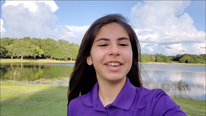
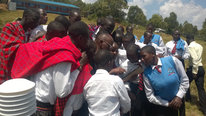

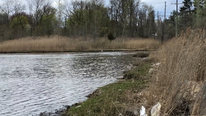
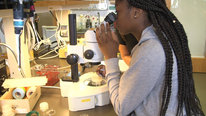
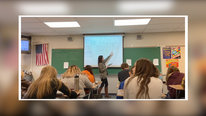
Amy Alznauer
Lecturer
Good Morning Everyone!
You made this powerful statement, “Students value their learning experiences the most when they have the chance to apply what they are learning in the field.” The rest of the video shows how you created amazing video content (using GoPros, Camcorders, etc) and other virtual interactive applications (Storymaps,etc) to give students a virtual field experience. So I have a few questions:
What was the impact on student learning? Did they feel like they did in fact have a chance to apply what they learned in the “field?”
And you mention that you hope the content you created will be useful across the learning spectrum. Could you say a bit more about how you will make this content available to different courses, educational settings, etcetera.
Finally, how might you continue to use these new technologies and teaching methods in non-virtual settings? Might they continue to be a beautiful adjunct to the classroom and the field?
Zoe Goodrow
Research Specialist
Hi Amy! Thank you for watching our video and for the thoughtful questions.
1) We are just now beginning to pilot our first learning module - Nekton Ecology in Estuaries. We have an evaluation plan in place, so we will soon be able to answer the question on the impact on student learning.
2) We will share our completed set of modules with the different associations that our project team is associated with, such as the Organization of Biological Field Stations, the National Association of Marine Laboratories, and the North American Association for Environmental Education. All project partners have partnerships with high schools, and we plan on disseminating these projects to those partners as well. The StoryMaps and YouTube videos were designed to be accessible to learners with any level of content expertise in ocean sciences.
3) We hope the learning modules will continue to be used in non-virtual settings. Especially the StoryMaps and YouTube videos - those components would serve nicely as pre-labs for students before going out into the field.
Please share any additional questions you have! Here is a link to the first draft of our Nekton Ecology in Estuaries module that we are beginning to pilot - https://drive.google.com/drive/folders/1_RVfFhNngWxxBFobYMOZ_UG_aWomsmqQ?usp=sharing.
George Hein
Amy Alznauer
Amy Alznauer
Lecturer
These are wonderful responses! Thank you Zoe. And I'm really thrilled to see not only that you have an existing and impressive network through which you can disseminate your modules, but also that you plan to use these in an ongoing way.
Also, I just wanted to mention a comment from Elizabeth Hoadley below: "I really like the use of the StoryMaps in your virtual modules, as they offer the ability to pair a sense of place with the science." This seems to offer the nearest experience of being somewhere and a fantastic component of these virtual field excursions.
Zoe Goodrow
Research Specialist
Thank you, Amy! Our team has enjoyed creating the StoryMaps, especially. Thank you for your questions and comments.
George Hein
Professor Emeritus
Hi Justin and team,
Your video reminds us of how long Covid-19 has been with us. You were funded after it closed down actual field work for students.
As Amy asked (above) will you be preparing protocols that other schools that do not have field stations can use to develop virtual field trips for their students, or case studies that others can use virtually.
Zoe Goodrow
Research Specialist
Great question, George. Another goal of our project is to increase accessibility of field experiences by developing engaging virtual field experiences. In ocean science education, field experiences are only accessible to individuals that have the means to travel to oceanside field stations (ability to take work off, ability to travel, proximity of home/home university, etc.). We hope that our project will reach learners interested in ocean sciences across the country.
We plan to share the protocol we developed when making our learning modules in a webinar at the end of our project period (later this summer), which will be promoted in our professional networks (Organization of Biological Field Stations, the National Association of Marine Laboratories, and the North American Association for Environmental Education).
Please share if you have any additional ideas on how to get that information out to a broader audience!
George Hein
George Hein
Professor Emeritus
I imagne that highschool teachers might be interested. Contact NSTA, https://www.nsta.org or the museum/aquarium/zoo world, contact CAISE https://www.informalscience.org
Zoe Goodrow
Research Specialist
Thank you, George - these are great suggestions that we will explore!
Elizabeth Hoadley
Hi Justin and team,
As someone who got their start in environmental education in a field setting similar to the ones captured in your video, I often wondered during the pandemic how so many of the outdoor or field schools were handling learning. I really like the use of the StoryMaps in your virtual modules, as they offer the ability to pair a sense of place with the science. While this certainly doesn't replace in-person field experiences, I wonder if that added context increases engagement as compared to other virtual offerings that do not. I am definitely curious to hear how these are received once you implement these programs and learn more as you collect data from the evaluations you have planned!
My questions for your team are - (1) what specific aspects of your programs are you planning to collect feedback on with the evaluations and (2) Do you see your team using these virtual modules in conjunction with field experiences once we transition back to more *normal* settings?
Amy Alznauer
Zoe Goodrow
Research Specialist
Thank you for your comments and questions, Elizabeth! We like how the StoryMaps are georeferenced and how the background map moves as the learner goes through the tour - engaging and place-based. You can email the PI of this project - Dr. Justin Hougham at justin.hougham@wisc.edu if you are interested in learning the results of our evaluation!
Our evaluation tools will focus on learner "gains" - how student understanding of the pre-determined learning outcomes have changed after going through the module (i.e. content knowledge, connection to global issues, etc.).
In more *normal* settings, we anticipate the virtual modules reaching audiences (e.g. high school science courses, undergraduate courses) that are not near the coast - expanding access to field experiences virtually. We also imagine that the modules could serve as assignments to complete or review prior to a day in the field.
George Hein
Elizabeth Hoadley
I love the ideas for how to use these modules once in person events resume! What a great way to increase access of coastal resources to non-coastal students! I'm interested to see (even if evidence is all anecdotal) if watching the modules before a field class increases student participation or the amount of content you can cover in a field program! Great stuff!!
John Fraser
Are you doing any measures of nature connectedness that flow from these experiences. It would be interesting to know how these adaptations impact (positive or negative) nature values and beliefs. If there is any legacy impacts of COVID on nature connecteness.
Zoe Goodrow
Research Specialist
Great question - members of our project team are interested in evaluating connectedness to nature, but we haven't implemented that in evaluating this project. The project PI is currently piloting evaluation tools to measure connectedness to nature and environmental attitudes for some other ongoing projects - so we may work those tools into this project in the future. I agree that understanding the impact of virtual field experience on nature values and beliefs is interesting!
John Fraser
Thanks for the response. I'd highly recommend against piloting new measures. There are a pile of connectedness to nature pre-validated scales. Clayton's EID scale or Mayer & Franz CNS (both are better because you can compare nuance), and you can benchmark to other data like that collected by the US Forest Service in Los Angeles (Chavez & Winter). Conservation psychology has a host of resources and the more we can triangulate between projects like yours and other interventions, the more we'll know about the digital contribution to thinking. Best wishes.
George Hein
Daniel Zietlow
Thanks for sharing your project! This is something we've also been thinking about at NCAR - how can we virtually bring people to our spaces or out onto field campaigns. I think a lot of my questions have been answered in discussion already, but what are y'all thinking / strategies in terms of distributing your virtual field experiences to audiences that you may not have reached before?
Zoe Goodrow
Research Specialist
Thanks for your question, Daniel! As part of the project, we are developing and documenting our approach as we go. So far our dissemination plan includes distributing the modules through our professional networks (as mentioned above) and presenting our resources at national conferences (both conferences that we usually present at and conferences that are new to us). We hope that STEM for All will help extend our reach, as well!
Daniel Zietlow
Thanks for the info!
Martin Storksdieck
Director
I am late to the game: thank you for the video and the project. It brings up many questions around "second-best alternatives" to being in the field. The UFERN project and at least one NSF RAPID are also dealing with the question. What would you consider an advantage of a virtual field experience over an in-person one?
Zoe Goodrow
Research Specialist
Hi Martin - we appreciate the increased accessibility of virtual field experiences. While they do require internet access and a device to access them, virtual field experiences bring the field to learners anywhere. Virtual and asynchronous resources like this lessen the burden on learners to take time off of work or travel to the coast.
Toby Baker
Field experience is crucial for advanced learning. Sharing the virtual outdoors with learners is valuable. This is perfect tool during Covid.
Zoe Goodrow
Research Specialist
Thank you, Toby!